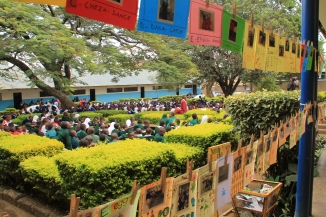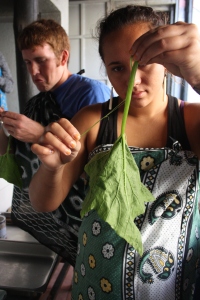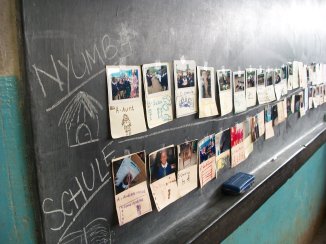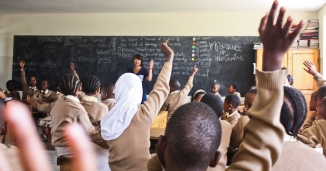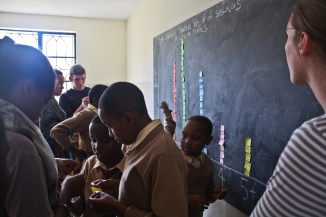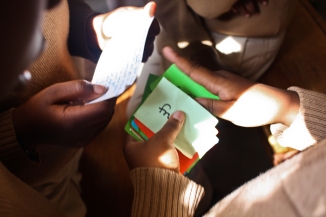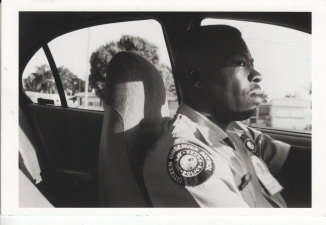I didn’t take this photo. I wasn’t even there when it was taken. I saw it for the first time yesterday, actually, at our final exhibition for all the LTP work that’s been done this summer. It was in the middle of an alphabet project that some of the teachers at Meru School had made with Yvonne. Can you guess the word this photo is showing and the letter of the alphabet it represents?
Choosing a photo for this reflection was a daunting task. Looking back on literally thousands of photos from this trip, how could I choose just one moment, one of the many things I’ve learned here, to talk about? I decided to start with a photo I loved. So here it is. Out of two months worth of photos, this is the one I love.
This photo stopped me in my tracks because I recognized it. Even though I had never seen it before, I instantly understood it. I know the feeling of being held exactly like that. I’ve seen that look on the faces of my aunts and my mom. I used to hold my little sister like that, my legs stretched out at just that angle, not wanting to move even though my legs were slowly going numb.
In the midst of the crowds looking at the projects at the exhibition, every so often I’d hear the excited yells of people finding themselves in a photo or identifying a photo they had taken. I overheard one little girl joyfully explaining to her friend: “Mimi hapa. Wewe hapa. Na mimi hapa!” I’m here. You’re here. And I’m here. The girl was maybe seven years old, which explains why I was able to understand her Swahili. But I think she was on to something. Recognizing yourself where you expect only strangeness is an amazing feeling. Looking at all their LTP work, the kids—and even the teachers—were seeing themselves as part of something that’s always been kept separate from and above them: their education.
In another area of the exhibition, Anneliese’s after school group of young inventors had hung posters of their designs for new inventions. One girl who had invented a more affordable alternative to shoe polish wrote about how she had been making this polish for her shoes long before she ever came to the inventing club. But when she got there and her teacher started talking about inventions, she realized that she was, in fact, an inventor. She had joined the ranks of all the famous and lofty inventors she was learning about in that moment when she couldn’t afford shoe polish and decided to do something about it. In that moment, her inner world and her education came together.
In most schools in Tanzania, students are not learning to be creative. But most children in Tanzania are incredibly creative—the way they play, dance, doodle and solve their own problems shows extraordinary imagination. But they see these two worlds—the worlds outside and inside the classroom—as irreconcilably divided. When we ask kids to use their imaginations to solve problems creatively in the classroom, we are hoping to bring these two worlds together, to show that you can be your creative, playful and innovative self as you go through your education.
In my own life and in the lives of the students here, we’re constantly given images of what we should be or what our education should look like. But what if those images were our images? The pictures in our heads, our dreams, the things we see each day, the things we recognize: what if those were in the textbooks or hanging up in the classroom for all to learn from? And what if we saw ourselves in the images of others, saw that we had the same fears and hopes? And after seeing what we have in common, maybe we would be able to understand the differences a little better.
For me, LTP is first and foremost about moments of recognition, of seeing yourself in the story of a great inventor or in the wary eyes of a child wrapped in a loving embrace.
M is for mother. Do you recognize this picture? Do you know it from your own life? Or from some outside idea of what “mother “means? Do you think this woman’s expression ever crosses your face? Does the child’s? When? What is different? What is the same?
In this photo, I see a late, hot night in footie pajamas, a hope for the future and a home waiting at the end of a long flight that leaves tomorrow.
What do you see?

